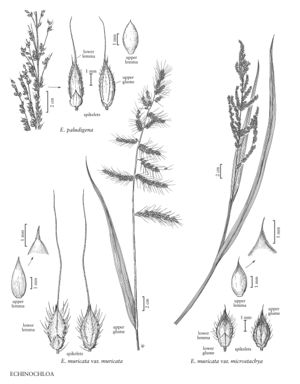Difference between revisions of "Echinochloa paludigena"
FNA>Volume Importer |
imported>Volume Importer |
||
| (3 intermediate revisions by 2 users not shown) | |||
| Line 4: | Line 4: | ||
|publications= | |publications= | ||
|common_names=Florida barnyard grass | |common_names=Florida barnyard grass | ||
| + | |special_status={{Treatment/ID/Special_status | ||
| + | |code=E | ||
| + | |label=Endemic | ||
| + | }} | ||
|basionyms= | |basionyms= | ||
|synonyms= | |synonyms= | ||
| Line 38: | Line 42: | ||
|publication title= | |publication title= | ||
|publication year= | |publication year= | ||
| − | |special status= | + | |special status=Endemic |
| − | |source xml=https:// | + | |source xml=https://bitbucket.org/aafc-mbb/fna-data-curation/src/200273ad09963decb8fc72550212de541d86569d/coarse_grained_fna_xml/V25/V25_1109.xml |
|subfamily=Poaceae subfam. Panicoideae | |subfamily=Poaceae subfam. Panicoideae | ||
|tribe=Poaceae tribe Paniceae | |tribe=Poaceae tribe Paniceae | ||
Latest revision as of 18:55, 11 May 2021
Plants annual. Culms to 150 cm, erect. Sheaths glabrous; ligules absent; blades 15-60 cm long, 8-20 mm wide, scabrous adaxially. Panicles 8-40 cm, erect to slightly drooping, rachis nodes hispid, hairs papillose-based; primary branches 2-19 cm, erect to spreading, often widely spaced, longer branches with secondary branching. Spikelets 3.3-4.5 mm long, 2.4-2.6 mm wide, disarticulating at maturity, greenish or purplish, scabrous and hispid, hairs to 1 mm, often papillose-based. Upper glumes about as long as the spikelets; lower florets staminate; lower lemmas usually awned, awns 1-15 mm, purplish; lower paleas well-developed; upper lemmas broadly ovate, narrowing abruptly to the acute or acuminate apices; anthers of upper florets 1.2-1.7 mm. Caryopses 1.5-1.8 mm. 2n = unknown.
Discussion
Echinochloa paludigena is native to swamps, river-banks, and other wet habitats. Reports from Texas and Louisiana appear to be based on misidentifications; Wunderlin (1988) considers E. paludigena as a Florida endemic.
Selected References
None.
